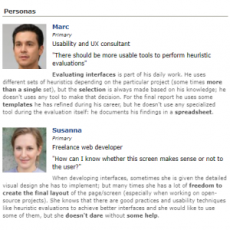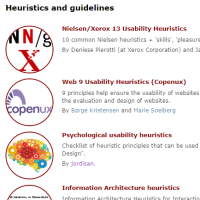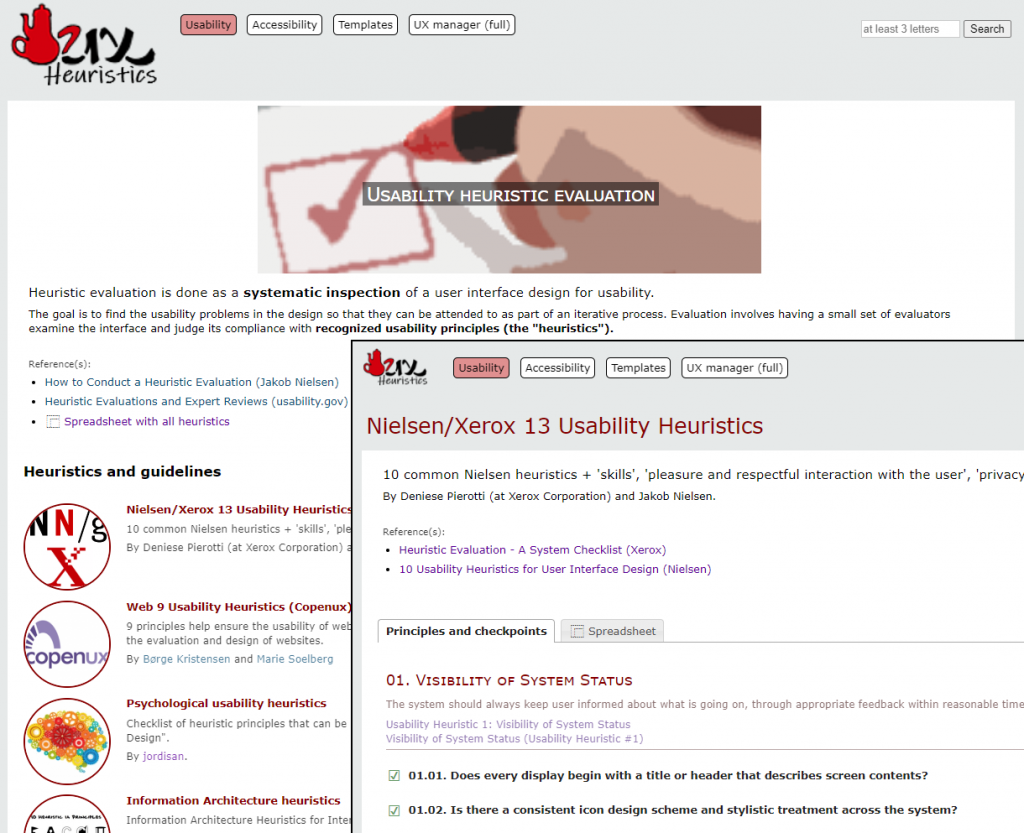
(TL;DR: personas at UX manager)
A persona is a description of an imaginary person who is an archetypical user of the system, and who may be used as a reference or inspiration when designing interfaces. Therefore, once we have defined the user roles involved in our system for UX evaluations, we can create some personas to make them more real.
Since we selected usability experts and frontend developers (as occasional evaluators) as focal roles, we have defined two personas, one for each of them:
- Susanna, a freelance web developer (occasional evaluator role)
- Marc, a usability and UX consultant (usability expert role)
These are primary personas who would require a dedicated interface; we may define other secondary personas whose needs would be met by the same interfaces used by primary personas.
Here you have those two personas in PDF format:
Or better browse them online (as they might change in the future):



